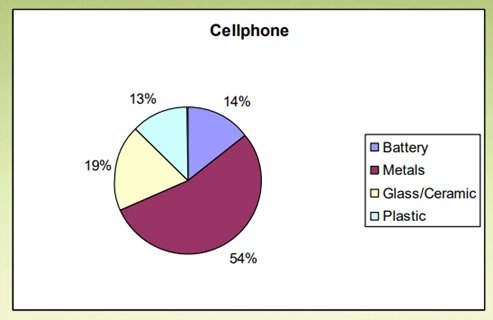Do you own a mobile phone? I think most of us do.
Care to know what this device made of and the impacts in our environment? How about the effects on human lives before it finally land in your hands and read this post?
Well, let’s start with a few back stories here.
In 2016, Asian Journal reported that 3.5 million smartphones were shipped in the Philippines and made us a fastest-growing smartphone nation in Southeast Asia.
Last year, the forecast stated that the number of smartphone users in the Philippines reach into 30.4 million. It grew 16% compare to 2016 and 20% last 2015. By 2022, the projection will reach into 46.04 million users and 2.87 billions around the globe. Think how much of our earth's natural resources will be exploited to fulfill this prophecy – it’s dark and it’s dirty.
The 3 key materials used to produce/manufacture a cellular phone are:
Glass for tough screens – aluminum oxide, silicon oxide, and indium tin oxide
Metals for its case, batteries, wirings, circuits, magnets, speakers, and motors – aluminum alloys, lithium cobalt oxide, carbon graphite, gold, copper, silver, platinum, and rare metals such as neodymium-iron-boron alloys, dysprosium, and praseodymium
Plastic for cellular phone case
Source

Fig. 1 – Percent Parts Distribution to assemble one (1) unit of cellular phone. Source
If one looks on the percent parts distribution used to assemble one full operational cellular phone, it is clearly stated that it uses metals more than half of its total materials needed. It also stated that some rare metals of about 97% were mined in China alone.
Strip mining in Germany. Source
There are several mining techniques to remove these minerals that make up the cellular phones contents
Surface mining, wherein shallow mineral deposits are removed to expose the resource for processing. It involves of the removal of vegetation including the forest, soil, rocks overlying some useful deposits is removed.
Open-pit mining, wherein machine is digging a large hole to remove metal ores (copper, gold, iron), sand, gravel, and stone (limestone, marble)
Open-pit mining in New Mexico. Source

Strip mining, this is used for flat terrain area wherein gigantic earthmover strips away the overburden to expose the mineral deposits.
Contour mining, this is used to mine coal on hills and mountainous terrain wherein gigantic power shovels and bulldozers are involve.
Mountaintop mining, another type of surface mining wherein the top of the mountain is removed to expose the seams of the coal.
Subsurface mining, this is used to remove underground minerals through tunnels and shafts like coal and metal ores before it transports in the surface. [1]
Mining in many ways has several harmful effects in environment
Enormous machines plow great volumes of waste rock and dirt into valleys mountaintops.
This destroys forest, buries mountain streams, and increases flood hazards. Also, wastewater and toxic sludge are pile-up mainly because of coal processing. Tropical forest and other tropical areas are destroying or degrades the vital biodiversity when forest are cleared and rivers are polluted with mining waste.
Below are few environmental issues and impacts when mining the key materials used for cellular phones:
1.Lihir gold mining in Papua New Guinea destroys the locality’s landscapes mainly because of dirty practices such as open pit mining and cyanide heap leaching. In addition, 5 million tons of toxic waste is being dumped in the Pacific Ocean each year or 20 tons of toxic waste produced for every 0.333 ounce of gold produced.
2.Greenhouse gas emissions and acid rain produced due to extractions of aluminum. This metal is not only extracted for the use of cellular production but also in the making of parts for aviation, aerospace, automobiles, food and beverages industries. The major environmental impact associated with each stage of aluminum production is greenhouse gas emissions because of smelting and refining of it. It also produces acid rain when mix with water vapor. This was recently addressed in the USA through joint effort with US Environmental Protection Agency and aluminum industries with a common goal to reduce its environmental impacts report the emissions produced.
3.In 2010, there were at least 163 deaths in Nigerian villagers, most under age 5, due to exposure to toxic lead that is present in gold ore extracted from gold mining. U.S. Centers for Disease Control and Prevention found lead concentration 250 times higher than allowed level in soil samples from those villages. [1]
4.Metallic tantalum which is used for holding an electric charge on a cellular phone is produced from Coltan, a metallic ore that has 80% of its world reserves located in the Democratic Republic of the Congo. In recent years, a rapid expansion of both legal and illegal mining of coltan has arisen which led to reduction of lowland gorillas and other habitat of similar species. It also contributed killing of lowland gorillas for bush meat to feed the miners. Although it gained international outcry, the threat is still there to this day. [1]
Thinking of owning 2 units of smartphones today? Most phones come with dual sims and have the same tricks as the next one. Think carefully if an extra one is necessary.
Let's think our environment and be cautious enough to take care of it.
Know that these natural resources are not here in our world FOREVER.
Reference
1. Tyler Miller, G., Spoolman, S.. (2013). Geology and Nonrenewable Minerals. In J.. Warde (Ed.), Environmental Science (263). International : Brooks/Cole, Cengage Learning


The one thing you can't live without everyday... our phones! Every interesting blog post.. :) I appreciate how thought out the article with regards to effects of having more more phones and the effects to the environment. Let's plant more trees.
Yep we need to do what little we can to contribute to restoration of the damage we have done to the environment.
Yes. Agree @trydaily and let's participate in public environmental activities - coastal cleanup, tree planting.
It sure does affect ones life in a huge way! Thanks for informing us!
Hi @heavenlydoms, you are very much welcome. Thank you for reading my post.